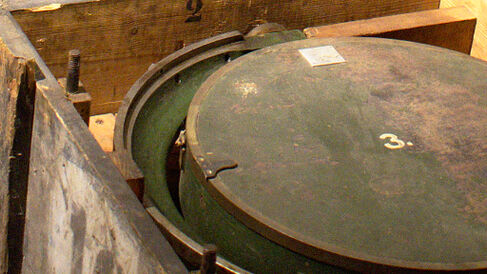Forgotten Instruments from an Eclipse Expedition

The two crates shown in Image 1 are time capsules from an eclipse expedition. Shipped out from the University of Cambridge’s Solar Physics Observatory sometime in the mid-20th Century, they were returned after use, sent to storage, and then forgotten.
Half a century later they were rediscovered and reopened for the first time since their final use in the field.
Come and find out more about some creepy, crawly creatures in our half term family activity sessions. Use microscopes to investigate insects, find out about beetles and scorpions and create your own model or drawing.
Inside one of the crates is a large coelostat mirror, used to hold the sun’s image stationary during totality. In the other is the mount for a clock-driven equatorial telescope.
Though definite records of their itinerant life do not survive, these instruments match the description of those used by the University’s eclipse parties in:
- Ål, Norway, 1927;
- the Hermitage Country Club, Magog, Canada, 1932 (where the field station was set up between two fairways on the golf course, requiring the instruments to be protected from errant golf balls);
- and the coral atoll Atafu, in the Tokelau Islands of the South Pacific, 1958.
Joshua Nall
Joshua Nall, ‘Forgotten Instruments from an Eclipse Expedition’, Explore Whipple Collections, Whipple Museum of the History of Science, University of Cambridge, 2020.
